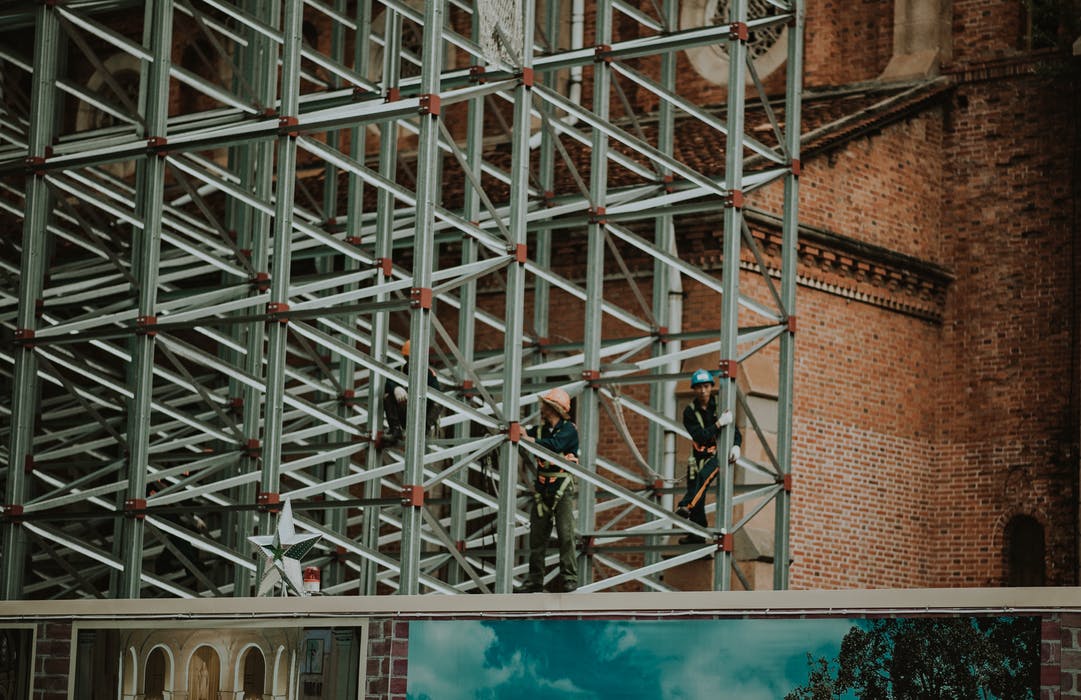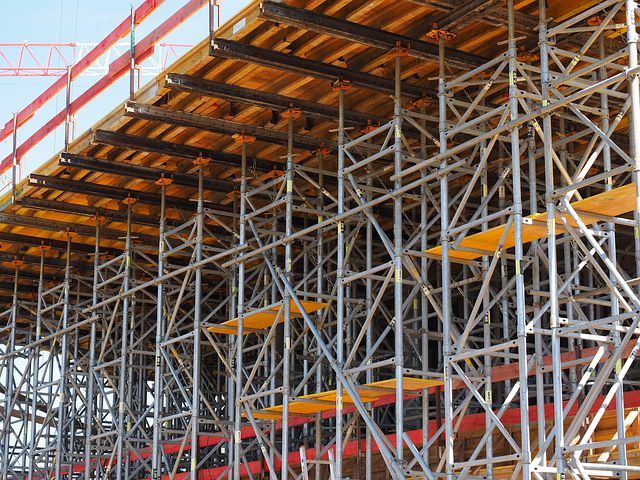
A Brief History Of Scaffoldings
- By : Albert Hunt
- Category : Construction Industry, General

Ever wonder how modern-day construction methods first developed? Scaffoldings are essential to a number of industries and are a key tool for the construction industry and interestingly enough they have their roots in Ancient times. Here’s a quick run down on the history of scaffoldings and what they’re like now in modern times.
Ancient scaffoldings
Archaeologists have discovered signs of scaffoldings in the walls of caves in Lascaux around cave paintings which suggested that they had installed and used scaffoldings to paint the ceiling more than 17 millennia ago. Ancient scaffoldings where also depicted on the Berlin Foundry Cup from the early fifth century BC. Known recordings of similar structures also exists for ancient Egyptian, Nubian and Chinese civilisations. The earliest structures were made from wood and rope.
Bamboo scaffoldings have existed for thousands of years at least and have been used in many recognisable structures including the Great Wall of China. It began to proliferate throughout the world around 1800 after Hong Kong was colonised and was used regularly to build homes and multi-storage buildings before metal scaffoldings existed.
Modern times

In the industrial era, the use of scaffold structures began to become more modernised and new standards, practices and designs began to emerge. Daniel Paler Jones and David Henry Jones were responsible for substantially modernising the system by patenting a coupling device known as the ‘Scaffixer’ which was much stronger than the rope reinforcement of ancient style structures. In 1913 Palmer Jones’ company was asked to construct Buckingham Palace and during that time his Scaffixer system gained a lot of attention. In 1919 Palmer jones’ invented the universal coupler which remains the standard to this very day. New advancements in the 20th century saw the introduction of metal structures instead of timber which allowed them to be constructed with interchangeable pieces. It also allowed them to be produced at standardised dimensions and allowed diagonal braces to be introduced which improved their stability and safety. The first proper frame system was introduced in 1944 and proliferated after the war to reconstruct buildings. As metal structures have grown in popularity, bamboo systems have decreased in popularity due to safety issues and a shortage of materials.
What they’re like today
Modern day safety standards mean that systems are now highly standardised and industries using the structures are often highly regulated and must carefully adhere to safety rules and requirements. They are generally constructed from metal tubes, couplers and boards and must be carefully erected and properly maintained. Tubes are lightweight and hollow and are usually made from aluminium or steel. They can be quickly and easily constructed. Decking is often made from laminate boards and is designed to give workers a safe platform to work from. Some boards are also made with a rubber base and are good for working on uneven surfaces.
Other components of the structures that are commonly included in modern structures include base plates, ladders, ropes, anchor ties, safety braces, gin wheels and netting. Many companies or brands will use colours on their structures to identify them. They are highly regulated in most countries due to the potential for safety hazards when working on them. Because they are usually used in construction workers in the past were often at serious risk of death or injury from falls or falling objects and materials. Before modern innovations they were very dangerous and many workers died working on them. They are still dangerous today but have a much higher standard of safety when properly installed and maintained. Proper training and installation are essential to protect workers.
No Comments